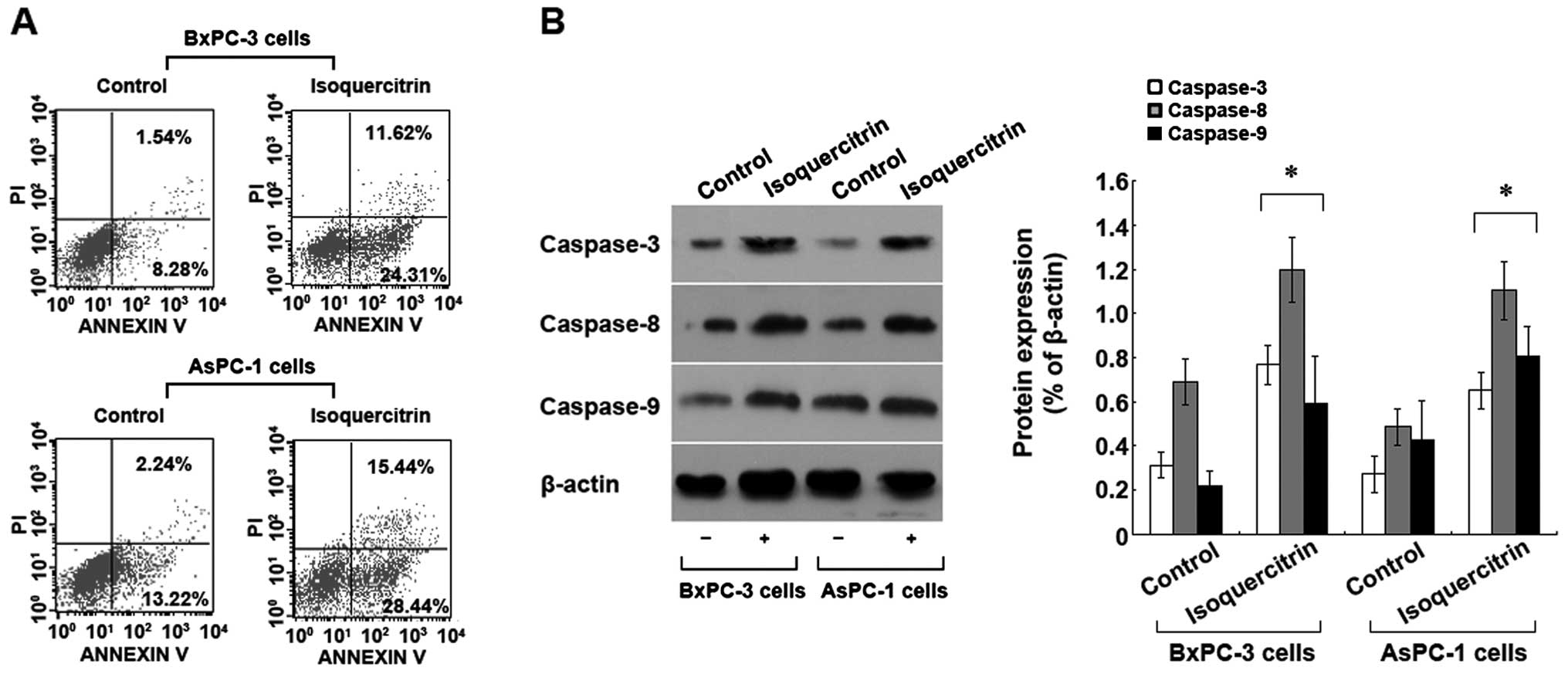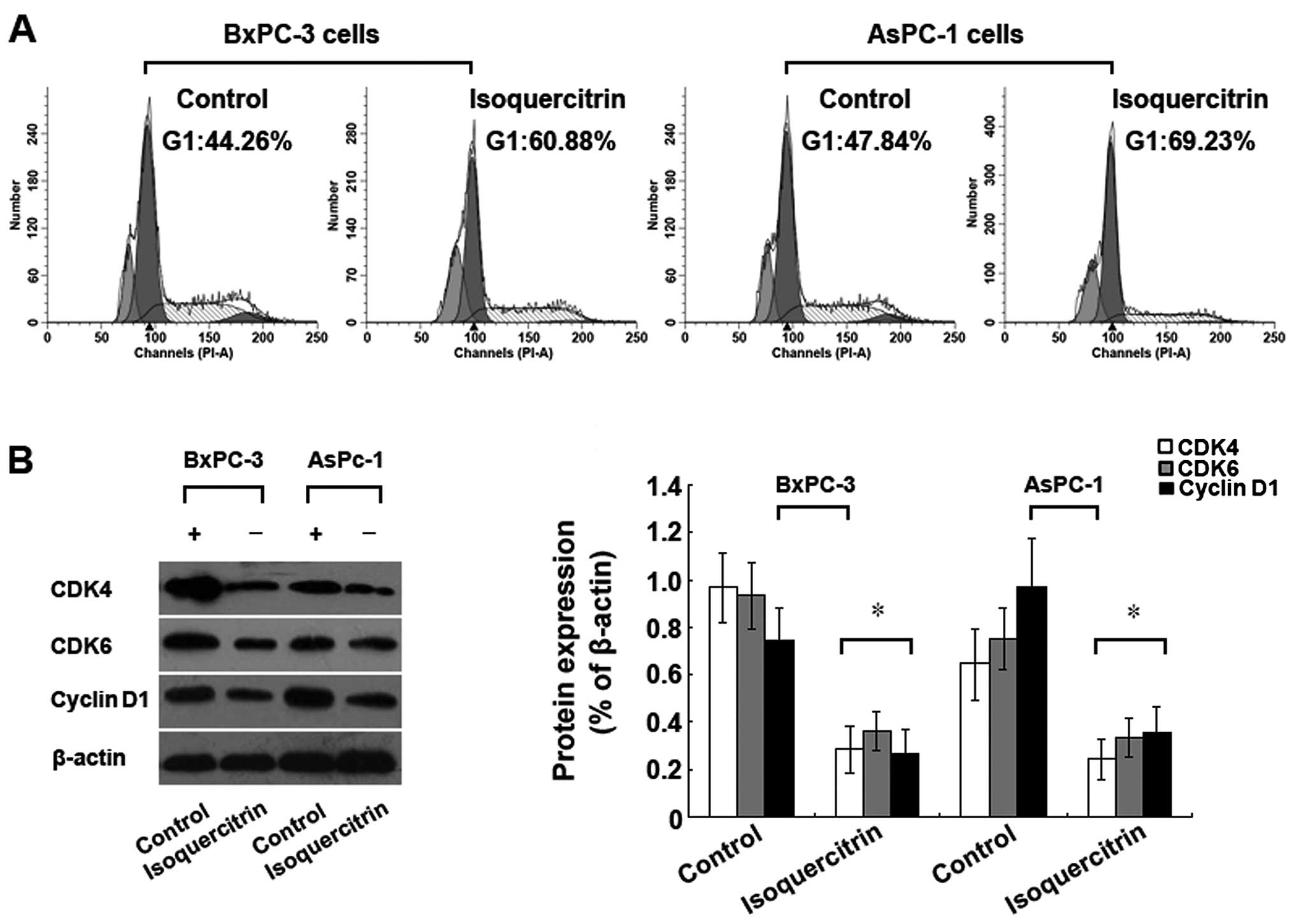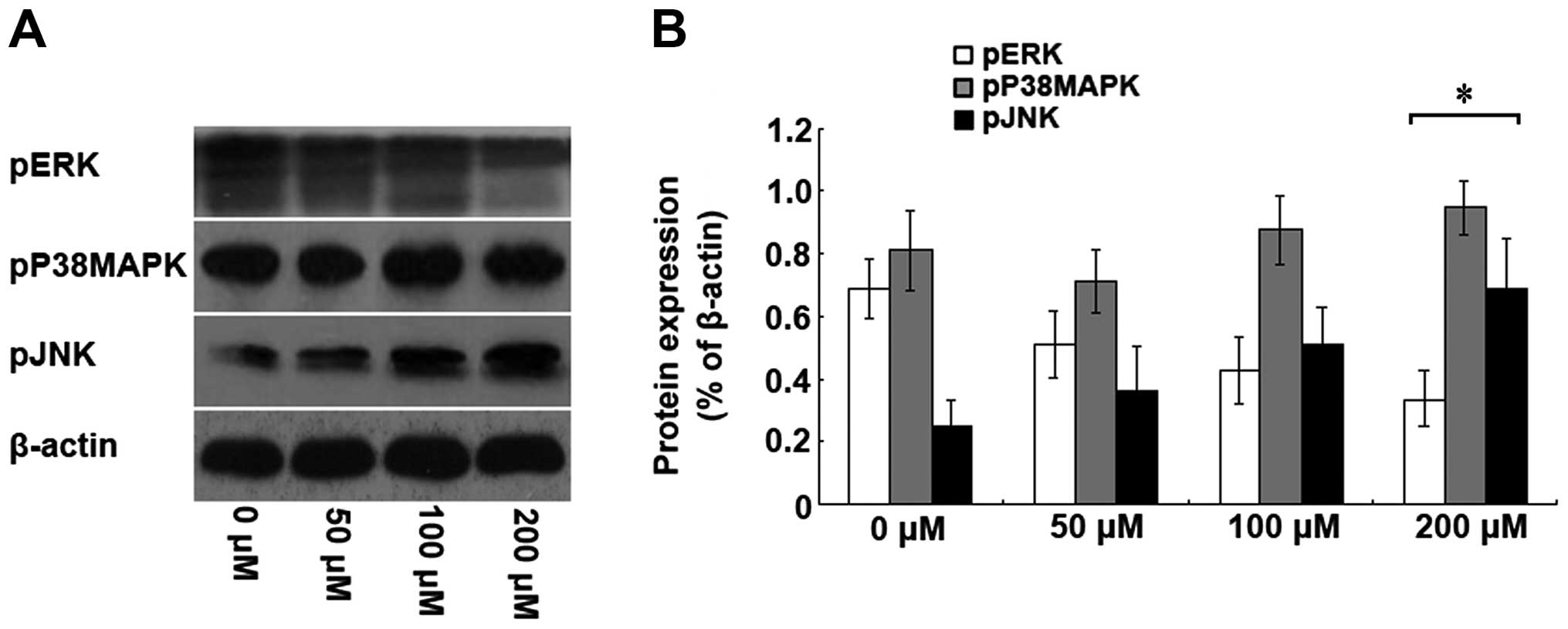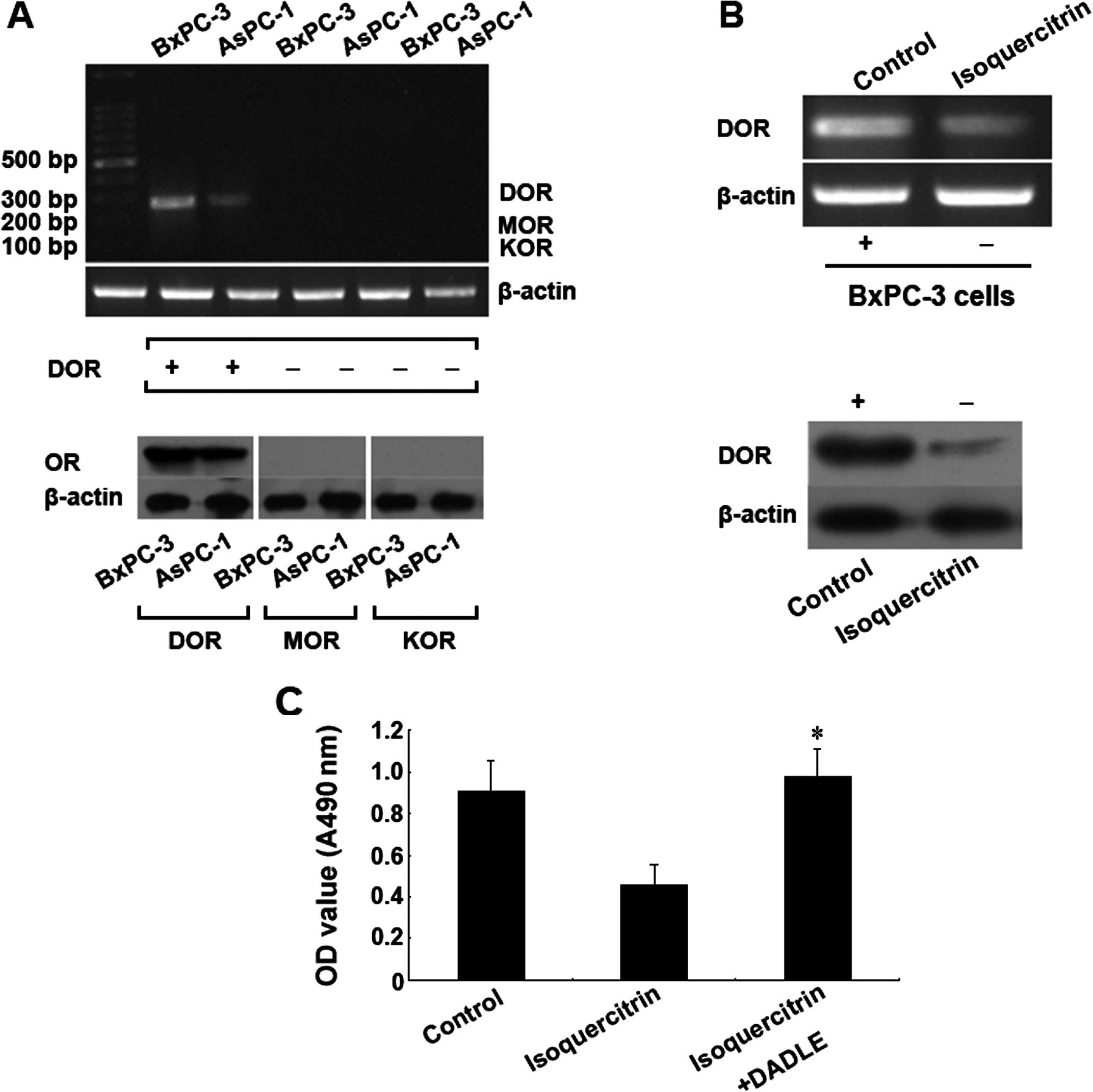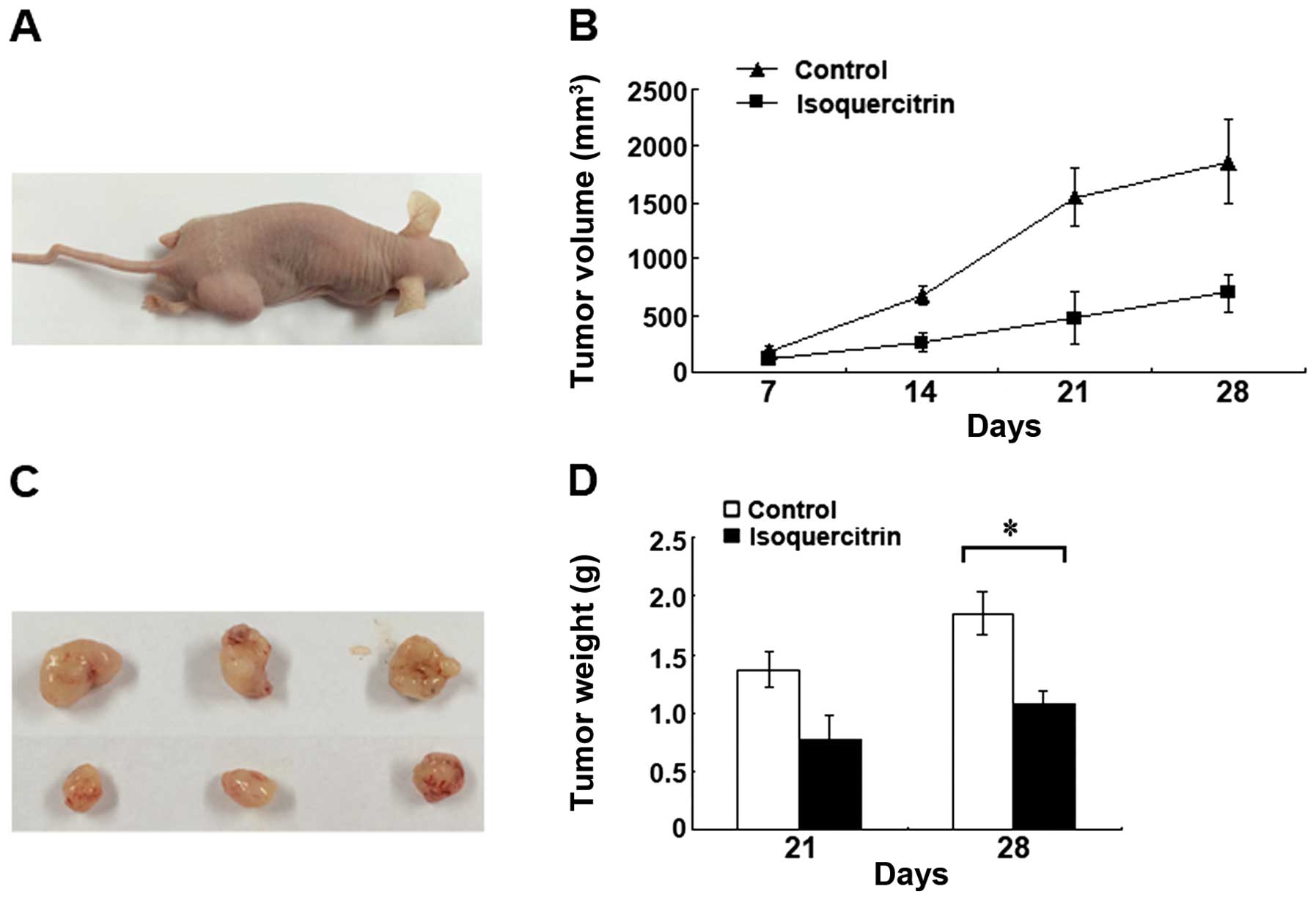|
1
|
Roy R and Maraveyas A: Chemoradiation in
pancreatic adenocarcinoma: a literature review. Oncologist.
15:259–269. 2010. View Article : Google Scholar : PubMed/NCBI
|
|
2
|
Mian OY, Ram AN, Tuli R and Herman JM:
Management options in locally advanced pancreatic cancer. Curr
Oncol Rep. 16:3882014. View Article : Google Scholar : PubMed/NCBI
|
|
3
|
Jemal A, Siegel R, Ward E, Murray T, Xu J
and Thun MJ: Cancer statistics, 2007. CA Cancer J Clin. 57:43–66.
2007. View Article : Google Scholar : PubMed/NCBI
|
|
4
|
Lockhart AC, Rothenberg ML and Berlin JD:
Treatment for pancreatic cancer: current therapy and continued
progress. Gastroenterology. 128:1642–1654. 2005. View Article : Google Scholar : PubMed/NCBI
|
|
5
|
Wray CJ, Ahmad SA, Matthews JB and Lowy
AM: Surgery for pancreatic cancer: recent controversies and current
practice. Gastroenterology. 128:1626–1641. 2005. View Article : Google Scholar : PubMed/NCBI
|
|
6
|
Gudjonsson B: Pancreatic cancer: survival
errors and evidence. Eur J Gastroenterol Hepatol. 21:1379–1382.
2009. View Article : Google Scholar : PubMed/NCBI
|
|
7
|
Fulda S: Tumor resistance to apoptosis.
Int J Cancer. 124:511–515. 2009. View Article : Google Scholar
|
|
8
|
Hanahan D and Weinberg RA: The hallmarks
of cancer. Cell. 100:57–70. 2000. View Article : Google Scholar : PubMed/NCBI
|
|
9
|
Tang J, Li N, Dai H and Wang K: Chemical
constituents from seeds of Alpinia katsumadai, inhibition on NF-κB
activation and anti-tumor effect. Zhongguo Zhong Yao Za Zhi.
35:1710–1714. 2010.(In Chinese). PubMed/NCBI
|
|
10
|
Ghosh A, Ghosh D, Sarkar S, Mandal AK,
Thakur Choudhury S and Das N: Anticarcinogenic activity of
nanoencapsulated quercetin in combating diethylnitrosamine-induced
hepatocarcinoma in rats. Eur J Cancer Prev. 21:32–41. 2012.
View Article : Google Scholar
|
|
11
|
Vogel S, Ohmayer S, Brunner G and Heilmann
J: Natural and non-natural prenylated chalcones: synthesis,
cytotoxicity and anti-oxidative activity. Bioorg Med Chem.
16:4286–4293. 2008. View Article : Google Scholar : PubMed/NCBI
|
|
12
|
Liu H, Dong A, Gao C, Tan C, Xie Z, Zu X,
Qu L and Jiang Y: New synthetic flavone derivatives induce
apoptosis of hepatocarcinoma cells. Bioorg Med Chem. 18:6322–6328.
2010. View Article : Google Scholar : PubMed/NCBI
|
|
13
|
Khan MS, Halagowder D and Devaraj SN:
Methylated chrysin induces co-ordinated attenuation of the
canonical Wnt and NF-kB signaling pathway and upregulates apoptotic
gene expression in the early hepatocarcinogenesis rat model. Chem
Biol Interact. 193:12–21. 2011. View Article : Google Scholar : PubMed/NCBI
|
|
14
|
Ullmannova V and Popescu NC: Inhibition of
cell proliferation, induction of apoptosis, reactivation of DLC1,
and modulation of other gene expression by dietary flavone in
breast cancer cell lines. Cancer Detect Prev. 31:110–118. 2007.
View Article : Google Scholar : PubMed/NCBI
|
|
15
|
Valentová K, Vrba J, Bancířová M,
Ulrichová J and Křen V: Isoquercitrin: pharmacology, toxicology,
and metabolism. Food Chem Toxicol. 68:267–282. 2014. View Article : Google Scholar : PubMed/NCBI
|
|
16
|
Liu Z, Zhang A, Guo Y and Dong C:
Electrochemical sensor for ultrasensitive determination of
isoquercitrin and baicalin based on DM-β-cyclodextrin
functionalized graphene nanosheets. Biosens Bioelectron.
58:242–248. 2014. View Article : Google Scholar : PubMed/NCBI
|
|
17
|
Huang G, Tang B, Tang K, Dong X, Deng J,
Liao L, Liao Z, Yang H and He S: Isoquercitrin inhibits the
progression of liver cancer in vivo and in vitro via the MAPK
signalling pathway. Oncol Rep. 31:2377–2384. 2014.PubMed/NCBI
|
|
18
|
Fujii Y, Kimura M, Ishii Y, Yamamoto R,
Morita R, Hayashi SM, Suzuki K and Shibutani M: Effect of
enzymatically modified isoquercitrin on preneoplastic liver cell
lesions induced by thioacetamide promotion in a two-stage
hepatocarcinogenesis model using rats. Toxicology. 305:30–40. 2013.
View Article : Google Scholar : PubMed/NCBI
|
|
19
|
Shimada Y, Dewa Y, Ichimura R, Suzuki T,
Mizukami S, Hayashi SM, Shibutani M and Mitsumori K: Antioxidant
enzymatically modified isoquercitrin suppresses the development of
liver preneoplastic lesions in rats induced by β-naphthoflavone.
Toxicology. 268:213–218. 2010. View Article : Google Scholar : PubMed/NCBI
|
|
20
|
Amado NG, Cerqueira DM, Menezes FS, da
Silva JF, Neto VM and Abreu JG: Isoquercitrin isolated from Hyptis
fasciculata reduces glioblastoma cell proliferation and changes
β-catenin cellular localization. Anticancer Drugs. 20:543–552.
2009. View Article : Google Scholar : PubMed/NCBI
|
|
21
|
Ono H, Basson MD and Ito H: PTK6 promotes
cancer migration and invasion in pancreatic cancer cells dependent
on ERK signaling. PLoS One. 9:e960602014. View Article : Google Scholar : PubMed/NCBI
|
|
22
|
Takahashi R, Hirata Y, Sakitani K, Nakata
W, Kinoshita H, Hayakawa Y, Nakagawa H, Sakamoto K, Hikiba Y,
Ijichi H, Moses HL, Maeda S and Koike K: Therapeutic effect of
c-Jun N-terminal kinase inhibition on pancreatic cancer. Cancer.
104:337–344. 2013.
|
|
23
|
Hornick JR, Vangveravong S, Spitzer D,
Abate C, Berardi F, Goedegebuure P, Mach RH and Hawkins WG:
Lysosomal membrane permeabilization is an early event in sigma-2
receptor ligand mediated cell death in pancreatic cancer. J Exp
Clin Cancer Res. 31:412012. View Article : Google Scholar : PubMed/NCBI
|
|
24
|
Zagon IS and McLaughlin PJ: Targeting
opioidergic pathways as a novel biological treatment for advanced
pancreatic cancer. Expert Rev Gastroenterol Hepatol. 6:133–135.
2012. View Article : Google Scholar : PubMed/NCBI
|
|
25
|
Oliveira FQ, Andrade-Neto V, Krettli AU
and Brandão MG: New evidences of antimalarial activity of Bidens
pilosa roots extract correlated with polyacetylene and flavonoids.
J Ethnopharmacol. 93:39–42. 2004. View Article : Google Scholar : PubMed/NCBI
|
|
26
|
Atta AH and Mouneir SM: Evaluation of some
medicinal plant extracts for antidiarrhoeal activity. Phytother
Res. 19:481–485. 2005. View
Article : Google Scholar : PubMed/NCBI
|
|
27
|
Sukumaran P, Nair AG, Chinmayee DM, Mini I
and Sukumaran ST: Phytochemical investigation of Bidens biternata
(Lour.) Merr and Sheriff - a nutrient-rich leafy vegetable from
Western Ghats of India. Appl Biochem Biotechnol. 167:1795–1801.
2012. View Article : Google Scholar : PubMed/NCBI
|
|
28
|
Yuan LP, Chen FH, Ling L, Bo H, Chen ZW,
Li F, Zhong MM and Xia LJ: Protective effects of total flavonoids
of Bidens bipinnata L. against carbon tetrachloride-induced liver
fibrosis in rats. J Pharm Pharmacol. 60:1393–1402. 2008. View Article : Google Scholar : PubMed/NCBI
|
|
29
|
Yang QH, Yang J, Liu GZ, Wang L, Zhu TC,
Gao HL and Kou XG: Study on in vitro anti-tumor activity of Bidens
bipinnata L. extract. Afr J Tradit Complement Altern Med.
10:543–549. 2013.PubMed/NCBI
|
|
30
|
Kumari P, Misra K, Sisodia BS, Faridi U,
Srivastava S, Luqman S, Darokar MP, Negi AS, Gupta MM, Singh SC and
Kumar JK: A promising anticancer and antimalarial component from
the leaves of Bidens pilosa. Planta Med. 75:59–61. 2009. View Article : Google Scholar
|
|
31
|
Ong PL, Weng BC, Lu FJ, Lin ML, Chang TT,
Hung RP and Chen CH: The anticancer effect of protein-extract from
Bidens alba in human colorectal carcinoma SW480 cells via the
reactive oxidative species- and glutathione depletion-dependent
apoptosis. Food Chem Toxicol. 46:1535–1547. 2008. View Article : Google Scholar : PubMed/NCBI
|
|
32
|
Wu J, Wan Z, Yi J, Wu Y, Peng W and Wu J:
Investigation of the extracts from Bidens pilosa Linn. var radiata
Sch Bip for antioxidant activities and cytotoxicity against human
tumor cells. J Nat Med. 67:17–26. 2013. View Article : Google Scholar
|
|
33
|
Zhong MM, Chen FH, Yuan LP, Wang XH and Wu
FR: Study on the property of adsorption and separation of the
macroporous resins for total flavonoids of Bidens bipinnata L.
Zhong Yao Cai. 30:338–341. 2007.(In Chinese). PubMed/NCBI
|
|
34
|
Lee S, Park HS, Notsu Y, Ban HS, Kim YP,
Ishihara K, Hirasawa N, Jung SH, Lee YS, Lim SS, Park EH, Shin KH,
Seyama T, Hong J and Ohuchi K: Effects of hyperin, isoquercitrin
and quercetin on lipopolysaccharide-induced nitrite production in
rat peritoneal macrophages. Phytother Res. 22:1552–1556. 2008.
View Article : Google Scholar : PubMed/NCBI
|
|
35
|
Hirano T, Kawai M, Arimitsu J, Ogawa M,
Kuwahara Y, Hagihara K, Shima Y, Narazaki M, Ogata A, Koyanagi M,
Kai T, Shimizu R, Moriwaki M, Suzuki Y, Ogino S, Kawase I and
Tanaka T: Preventative effect of a flavonoid, enzymatically
modified isoquercitrin on ocular symptoms of Japanese cedar
pollinosis. Allergol Int. 58:373–382. 2009. View Article : Google Scholar : PubMed/NCBI
|
|
36
|
Magalingam KB, Radhakrishnan A and
Haleagrahara N: Protective effects of flavonol isoquercitrin,
against 6-hydroxy dopamine (6-OHDA)-induced toxicity in PC12 cells.
BMC Res Notes. 7:492014. View Article : Google Scholar : PubMed/NCBI
|
|
37
|
Li R, Yuan C, Dong C, Shuang S and Choi
MM: In vivo antioxidative effect of isoquercitrin on
cadmium-induced oxidative damage to mouse liver and kidney. Naunyn
Schmiedebergs Arch Pharmacol. 383:437–445. 2011. View Article : Google Scholar : PubMed/NCBI
|
|
38
|
Gong WY, Wu JF, Liu BJ, Zhang HY, Cao YX,
Sun J, Lv YB, Wu X and Dong JC: Flavonoid components in Scutellaria
baicalensis inhibit nicotine-induced proliferation, metastasis and
lung cancer-associated inflammation in vitro. Int J Oncol.
44:1561–1570. 2014.PubMed/NCBI
|
|
39
|
Bądziul D, Jakubowicz-Gil J, Paduch R,
Głowniak K and Gawron A: Combined treatment with quercetin and
imperatorin as a potent strategy for killing HeLa and Hep-2 cells.
Mol Cell Biochem. 392:213–227. 2014. View Article : Google Scholar :
|
|
40
|
You OH and Kim SH, Kim B, Sohn EJ, Lee HJ,
Shim BS, Yun M, Kwon BM and Kim SH: Ginkgetin induces apoptosis via
activation of caspase and inhibition of survival genes in PC-3
prostate cancer cells. Bioorg Med Chem Lett. 23:2692–2695. 2013.
View Article : Google Scholar : PubMed/NCBI
|
|
41
|
Mujumdar N, Banerjee S, Chen Z, Sangwan V,
Chugh R, Dudeja V, Yamamoto M, Vickers SM and Saluja AK: Triptolide
activates unfolded protein response leading to chronic ER stress in
pancreatic cancer cells. Am J Physiol Gastrointest Liver Physiol.
306:G1011–G1020. 2014. View Article : Google Scholar : PubMed/NCBI
|
|
42
|
Heilmann AM, Perera RM, Ecker V, Nicolay
BN, Bardeesy N, Benes CH and Dyson NJ: CDK4/6 and IGF1 receptor
inhibitors synergize to suppress the growth of
p16INK4A-deficient pancreatic cancers. Cancer Res.
74:3947–3958. 2014. View Article : Google Scholar : PubMed/NCBI
|
|
43
|
Dewson G and Kluck RM: Mechanisms by which
Bak and Bax permeabilise mitochondria during apoptosis. J Cell Sci.
122:2801–2808. 2009. View Article : Google Scholar : PubMed/NCBI
|
|
44
|
Fombonne J, Bissey PA, Guix C, Sadoul R,
Thibert C and Mehlen P: Patched dependence receptor triggers
apoptosis through ubiquitination of caspase-9. Proc Natl Acad Sci
USA. 109:10510–10515. 2012. View Article : Google Scholar : PubMed/NCBI
|
|
45
|
Kim H, Lee SW, Park JS, Min JH and Kim HK:
Genomic analysis of [d-Ala2, d-Leu5]
enkephalin preconditioning in cortical neuron and glial cell injury
after oxygen deprivation. Brain Res. 1447:91–105. 2012. View Article : Google Scholar : PubMed/NCBI
|
|
46
|
Galeotti N and Ghelardini C: Regionally
selective activation and differential regulation of ERK, JNK and
p38MAP kinase signalling pathway by protein kinase C in mood
modulation. Int J Neuropsychopharmacol. 15:781–793. 2012.
View Article : Google Scholar
|
|
47
|
Raman M, Chen W and Cobb MH: Differential
regulation and properties of MAPKs. Oncogene. 26:3100–3112. 2007.
View Article : Google Scholar : PubMed/NCBI
|
|
48
|
Robbs BK, Lucena PI and Viola JP: The
transcription factor NFAT1 induces apoptosis through cooperation
with Ras/Raf/MEK/ERK pathway and upregulation of TNF-α expression.
Biochim Biophys Acta. 1833:2016–2028. 2013. View Article : Google Scholar : PubMed/NCBI
|
|
49
|
Dhanasekaran DN and Reddy EP: JNK
signaling in apoptosis. Oncogene. 27:6245–6251. 2008. View Article : Google Scholar : PubMed/NCBI
|
|
50
|
Nateri AS, Spencer-Dene B and Behrens A:
Interaction of phosphorylated c-Jun with TCF4 regulates intestinal
cancer development. Nature. 437:281–285. 2005. View Article : Google Scholar : PubMed/NCBI
|
|
51
|
Alspach E, Flanagan KC, Luo X, Ruhland MK,
Huang H, Pazolli E, Donlin MJ, Marsh T, Piwnica-Worms D, Monahan J,
Novack DV, McAllister SS and Stewart SA: p38MAPK plays a crucial
role in stromal-mediated tumorigenesis. Cancer Discov. 4:716–729.
2014. View Article : Google Scholar : PubMed/NCBI
|
|
52
|
Marengo B, De Ciucis CG, Ricciarelli R,
Furfaro AL, Colla R, Canepa E, Traverso N, Marinari UM, Pronzato MA
and Domenicotti C: p38MAPK inhibition: a new combined approach to
reduce neuroblastoma resistance under etoposide treatment. Cell
Death Dis. 4:e5892013. View Article : Google Scholar : PubMed/NCBI
|
















